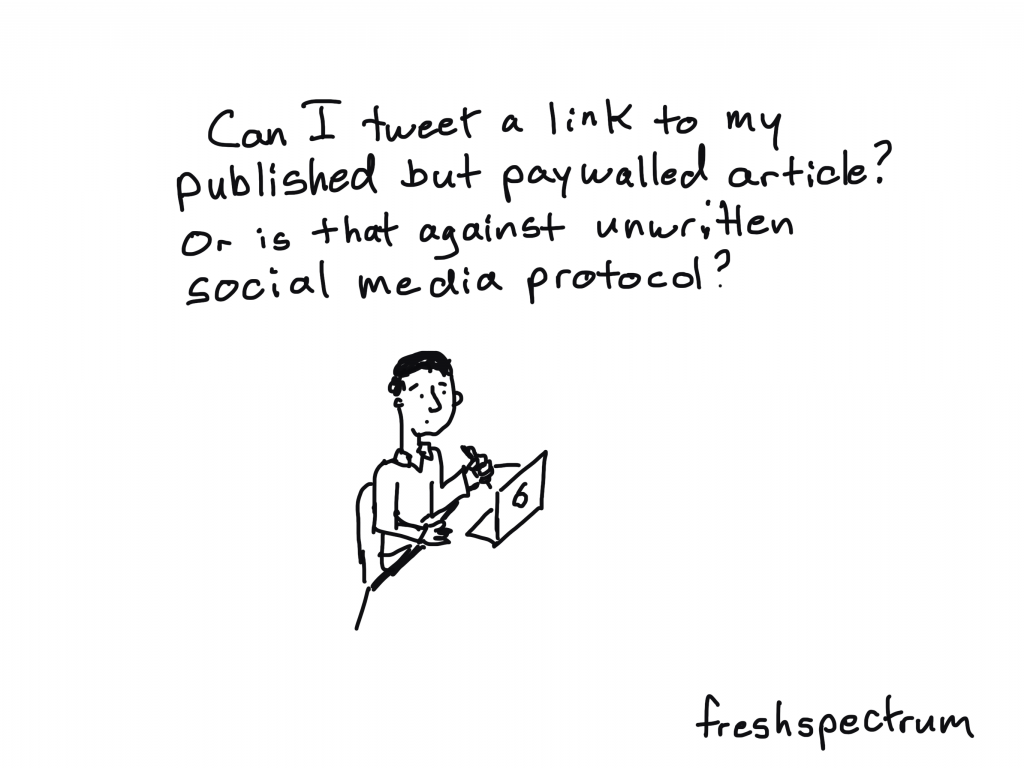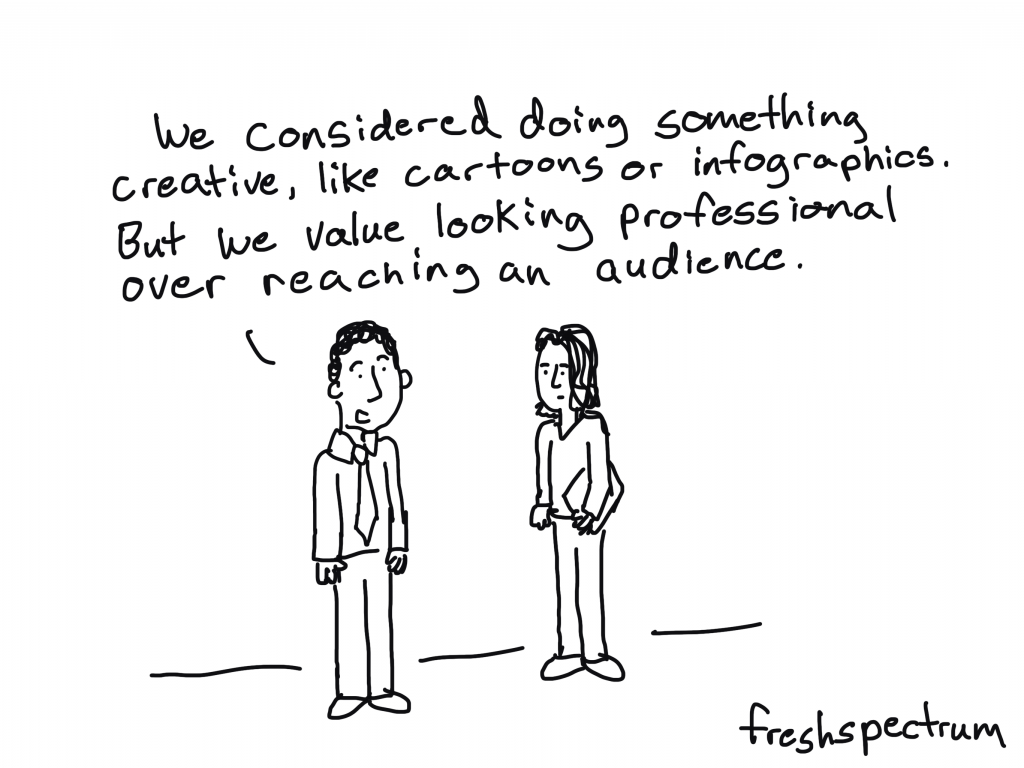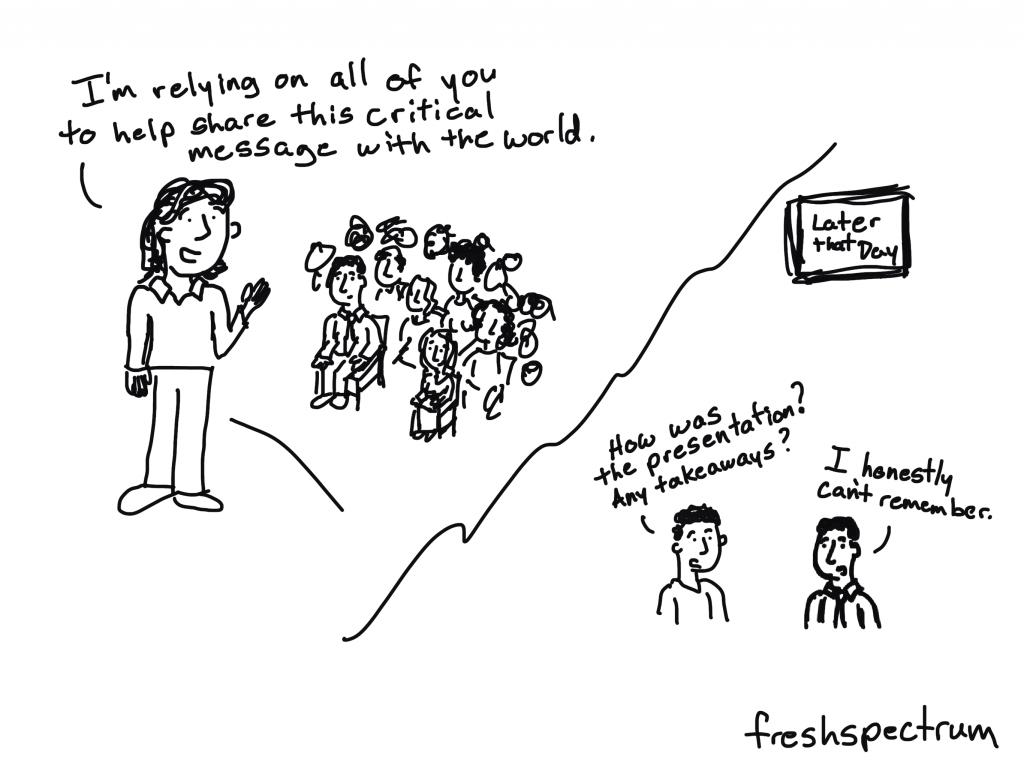This is an Eval Central archive copy, find the original at freshspectrum.com.
So I decided to try out podcasting. Today’s first ever episode is about Social Objects. Why? Because it basically covers the theory behind my cartooning.
Show Notes:
- Just in case the embed above is not working, you can find the podcast by clicking here.
- Social Objects: Everything You Ever Wanted to Know! (2007 blog post on gapingvoid.com, updated in 2017)
- Why some social network services work and others don’t — Or: the case for object-centered sociality (a 2005 blog post by Jyri Engeström who was the inspiration for Hugh McLeod)
Related Cartoons




Welcome to behind the cartoon.
This is a podcast about the people and ideas that have inspired the cartoons that I draw on my blog at freshspectrum.com.
My name is Chris Lysy.
Today’s question. What are Social Objects?
***
When you think about social networks, what pops into your mind?
You probably see one of those little diagrams with little dots or nodes and connecting lines. Or maybe even little people icons with lines drawn between them.
Usually we think about these networks as people connecting to other people.
But what this vision misses is the way in which people also connect to objects.
Often, it’s their connection with those objects that connect them to other people.
Think about it.
Let’s say you have a group of friends you met when you joined a softball league. The people on the team all became part of your friend network. But it was the team, and the league, that facilitated the network’s creation.
There are lots of interesting people with interesting ideas. But it takes a person putting those ideas into some type of object before most other people will discover them. Books, journal articles, podcasts, blogs, and presentations are all different types of social objects.
And yes, my cartoons are most certainly designed to be social objects.
I learned about the concept from a cartoonist by the name of Hugh Mcleod who goes into a good bit of detail on his blog at gapingvoid.com. I’ll share one of his blog posts in the show notes.
Hugh applied the idea of social objects to his own cartooning process, focused mostly around business topics.
And that’s also what I try to do, but with academic topics and concepts.
Most academic fields and subjects are, in my opinion, under illustrated. When most work is shared behind closed doors in conference presentations and through journal articles, illustration is only really quasi-important.
But on the web, things are different. The digital world is a visual world. The inability to depict complex or complicated subjects is problematic, because it limits the spread of ideas. Often incredibly important ideas.
So I draw cartoons, attempting to illustrate important ideas. And as a cartoon, that idea spreads much further than it would without the cartoon. When a cartoon works, you find it in social media posts, blog posts, and presentations. It becomes an object with an orbit and connects people in a way that no journal article ever will.
Now that’s just what I’m doing with the concept.
There are all sorts of social objects you can create to spread your ideas. Infographics, podcasts, and webinars all travel pretty well digitally.
What kind of object can you create to help your ideas spread further?
***
Thanks for listening. Before you go about your day, check out the description for a link to today’s show notes. In addition to links that include more info on social objects, you’ll also find a few new cartoons inspired by this topic.
Please enjoy and share. And if this episode inspires you to create your own social object, leave me a comment, I would love to see what you created.